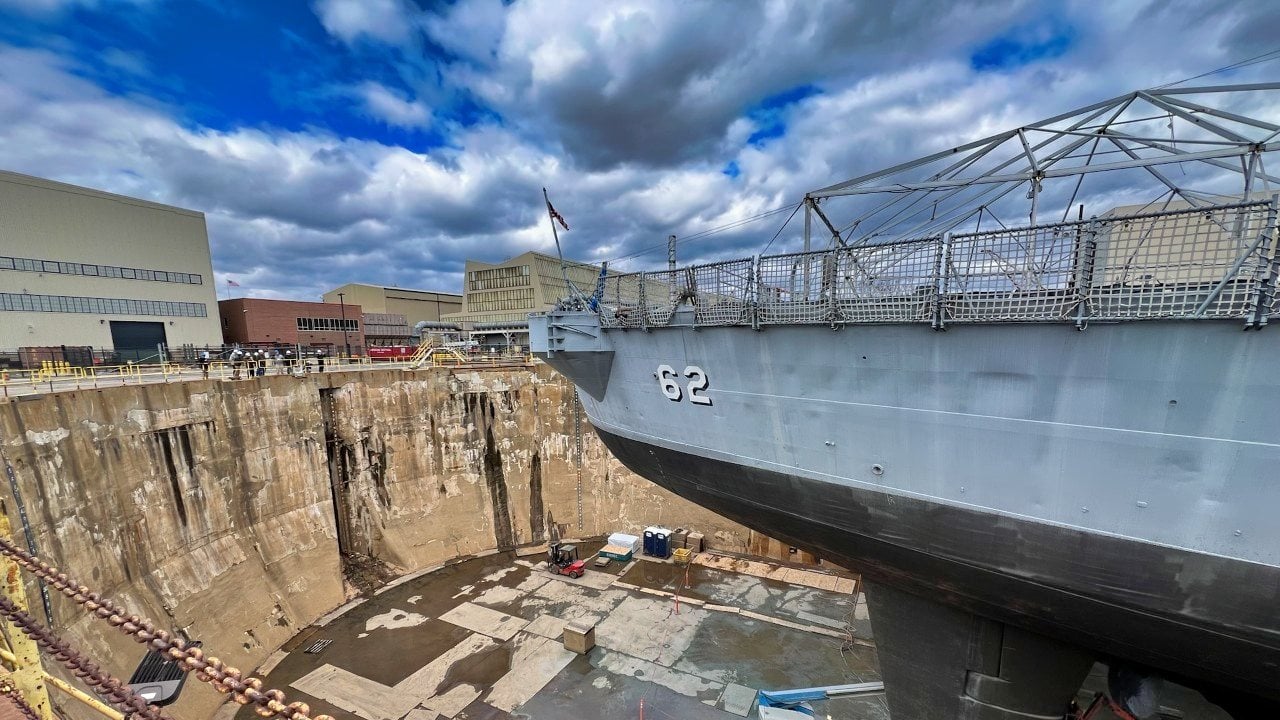Iowa-Class USS New Jersey Battleship Is Undergoing a Massive Update
The USS New Jersey, an Iowa-class battleship also known as "Big J," is currently undergoing a significant $10 million refurbishment, its first in 32 years.
Summary: The USS New Jersey, an Iowa-class battleship also known as "Big J," is currently undergoing a significant $10 million refurbishment, its first in 32 years. First commissioned in 1943 during World War II, the New Jersey has a storied history, serving in multiple conflicts including the Pacific Theater, Korean War, and Vietnam War before being decommissioned for the last time in 1991.
-Since then, it has served as a museum ship in Camden, New Jersey. The restoration, expected to take 60 days, is essential for its preservation and includes routine maintenance, repairs, and repainting.
-The work is scheduled to be completed in time for Memorial Day, ensuring the battleship remains a viable attraction for its annual 80,000 visitors.
USS New Jersey Battleship Undergoes $10 Million Refurbishment
Despite retiring long ago, the USS New Jersey, the famed Iowa-class battleship, is back in the news. Why? The New Jersey, nicknamed “Big J,” which has been serving as a museum ship since 1990, is undergoing $10 million worth of repairs.
“The battleship will undergo routine maintenance, repairs, and repainting for the first time in 32 years, a job that will cost $10 million,” reported the Maritime Examiner. “That task is expected to take 60 days following which the ship will be towed back to Camden in time for Memorial Day and the peak tourist season.”
Introducing the USS New Jersey
First commissioned in 1943, at the peak of World War II, the New Jersey was the second Iowa-class battleship commissioned. After being constructed at the Philadelphia Naval Shipyard (just south of New Jersey), the New Jersey sailed west to participate in the Pacific Theater against Imperial Japan. During the war, the New Jersey was awarded more battle stars than any of the other three Iowa-class battleships. The battle stars stemmed from a variety of engagements, such as the shelling of Guam and Okinawa, and the screening of aircraft carriers as they conducted raids in the Marshall Islands.
When the Japanese surrendered, the U.S. Navy evaluated the New Jersey, concluding that Big J still had some life to give. Accordingly, the New Jersey was deployed to the Korean War for two separate tours. Off the coast of Korea, New Jersey unleashed her 16-inch guns against land-based targets along the coastline. The New Jersey’s fire support aided United Nations troops as they prepared for ground actions.
After the Korean War, the New Jersey was decommissioned. But that status wouldn’t last long. During the Vietnam War, Secretary of Defense Robert McNamara conducted a study to determine methods for mitigating heavy U.S. aircraft losses. The study led to the decision to recommission the New Jersey. Fortunately, having received an extensive overhaul just prior to decommissioning, the New Jersey was in respectable shape and worthy of continued service. Coming out of retirement, the New Jersey became the only active battleship in the world, a symbol of an epic, yet concluded era in naval combat.

When the Americans finally withdrew from Saigon in 1975, the New Jersey was once again decommissioned. But once again, the vessel would not stay decommissioned. Rather, President Ronald Reagan would recommission the New Jersey in 1982, as part of his effort to establish a 600-ship navy.
In 1991, the New Jersey was decommissioned for the last time; she has served as a museum piece ever since.
Time for a Tune-up
The New Jersey was due for a tune-up. “We’re way overdue and are moving forward now because it will be more expensive every year we wait,” said Marshall Spevak of the Homeport Alliance, in reference to the New Jersey. Spevak added that the New Jersey has been overdue, specifically, for twelve years according to the U.S. Navy’s maintenance prescriptions, which recommend a dry-dock period every two decades.

Keeping the New Jersey afloat as a museum piece costs $10,000 per day. The costs are covered thanks to tourist visits and donations. Once the overhaul is complete, expect the New Jersey to return to museum service, where upwards of 80,000 visitors will view the ship each year.
About the Author: Harrison Kass
Harrison Kass is a defense and national security writer with over 1,000 total pieces on issues involving global affairs. An attorney, pilot, guitarist, and minor pro hockey player, Harrison joined the US Air Force as a Pilot Trainee but was medically discharged. Harrison holds a BA from Lake Forest College, a JD from the University of Oregon, and an MA from New York University. Harrison listens to Dokken.
The main image is Creative Commons. All others are taken by Ethan Saunders/The National Interest.


